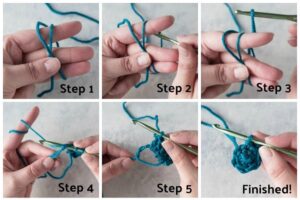Crafting is an art. It allows us to express creativity and style through projects. From easy patterns to complex designs, the possibilities are endless. This article will explore the world of crafting with style and expertise. We’ll look at techniques and ideas that can turn a pattern into something awesome.
We know a pattern is just the beginning. It sets up the project, but our skills and our touch make it come alive. Here, we’ll find details not seen anywhere else. Whether you are experienced or just starting, this journey has something for everyone. We’ll learn about materials, tools, and techniques. We’ll read about them but also take action.
So let’s dive into crafting. Let creativity fly as you make projects that show your style and skills. Start now and unlock potential. Join us on this thrilling journey. We’ll push boundaries and craft amazing projects. Are you ready to go? Unleash the inner craftsperson and let imagination go wild. Now is the time to seize this chance.
Understanding Patterns
To understand patterns in crafting with proficiency and style, dive into the section of ‘Understanding Patterns’. With an overview of patterns in crafting and the importance they hold in crafting projects, explore the ways these sub-sections provide insightful solutions for your creative endeavors.
Overview of patterns in crafting
Patterns in crafting are essential components which boost the look and practicality of a craft. They are like a guidebook, giving structure to the creative process. Knowing these patterns is necessary for both artisans and fans. It enables them to make exact replicas of designs and ways.
Now let’s get an overview of the patterns in crafting through a visual explanation:
| Types | Description |
| 1. Knitting Patterns | Instructions which say how stitches should be put together, making textures, shapes and motifs. |
| 2. Sewing Patterns | Templates which help make clothes or other fabric crafts. They show how to cut and stitch. |
| 3. Quilting Patterns | Designs used for quilting projects. They dictate how fabric shapes should be combined to make patterns. |
| 4. Woodworking Patterns | Detailed diagrams which tell woodworkers how to form, carve and put together pieces to make objects. |
Patterns not only give a recipe for crafting but they also allow personalization within the framework. By selecting different colors, materials or sizes, crafters can incorporate their personal style into projects while preserving the structural aspect.
The use of patterns in crafting has a long history. People have been using patterns for centuries to save traditional methods and cultural legacy. From tapestry designs found in archaeological digs to Renaissance lacework patterns passed on from one generation to the next, patterns have been a key part of crafting development.
Acknowledging and understanding patterns in crafting lets people unlock the wide potential of their favored craft. Either by getting ideas from existing templates or creating new ones, the appreciation and application of these designs help the crafting community to progress and innovate. So dive into the world of patterns, and fly with your imagination!
Importance of patterns in crafting projects
Patterns are essential for crafting projects. They give structure and guidance, helping crafters make their desired designs accurately. Patterns are like blueprints, allowing creators to visualize and execute their ideas successfully.
By following a pattern, crafters save time and effort. Instead of beginning from nothing, they can depend on a carefully-designed template that outlines the necessary steps and supplies needed for a successful project. Patterns also guarantee consistency, ensuring each crafted item follows the same design rules.
Moreover, patterns foster creativity and innovation. While giving a foundation, crafters have the freedom to personalize and modify patterns to their liking. This permits unique interpretations and customization, making each crafted item a one-of-a-kind masterpiece.
In addition to promoting creativity, patterns also act as educational tools. They introduce crafters to new techniques and skills, enabling them to widen their understanding and abilities in the world of crafting. By following various patterns, crafters can broaden their views and explore various styles and techniques.
To benefit from patterns in crafting projects, it is essential to select high-quality patterns from reliable sources. Additionally, reading and completely understanding the instructions prior to starting the project is essential for success. Crafters should also consider using various materials or color variations to add their own touch.
Besides, looking for inspiration from other crafters’ work can spark new ideas while staying up-to-date with present trends in the crafting community. Attend workshops or join online forums where fellow crafters share their experiences and ideas.
All in all, patterns are invaluable assets when it comes to crafting projects. They provide structure, promote creativity, facilitate skill development, and ensure consistent results. Spending time in understanding patterns will certainly boost any crafter’s expertise level while fostering a sense of accomplishment through the creation of exquisite handmade items.
Exploring Project Ideas
To explore project ideas with proficiency and style, dive into popular crafting projects using patterns. Discover the benefits of incorporating patterns into your crafting projects for enhanced creativity and precision.
Popular crafting projects using patterns
Crafting projects with patterns are now popular among enthusiasts. They show off creativity while following a design. Here are some popular crafting projects using patterns:
- Crochet creations – from blankets to accessories, intricate and delicate crochet patterns.
- Quilting wonders – fabric patterns, blankets, wall hangings, clothing.
- Papercraft marvels – cut and fold paper to make 3D designs, cards, or sculptures.
- Embroidery masterpieces – intricate details for clothing, homeware, accessories.
- Woodworking delights – unique pieces with precise detailing and carving.
- Jewelry with flair – beading patterns to create necklaces, earrings, bracelets.
There is much more than these popular options. Stencils, cross-stitch, and more. Crafting projects with patterns let people express their creativity.
In ages past, patterns were used to show culture and creativity. Textiles, pottery, and crafts evolved over time. Crafters still use patterns as a foundation, pushing boundaries with skill and imagination.
Benefits of using patterns in crafting projects
Patterns in crafting projects offer amazing advantages that can give your creative process a boost and make your project even better! Here are the key benefits:
- Simplifies Designing: Patterns are an awesome guide, with clear instructions and steps. They help avoid confusion and save time.
- Ensures Accuracy: Patterns are made with precise measurements and guidelines, so your finished project looks perfect.
- Encourages Creativity: Patterns provide a great framework to be creative with colors, textures, and more.
- Promotes Efficiency & Organization: Patterns help to systemize your project, which enables better use of materials, tools, and steps.
- Enhances Skills: Using different patterns lets you learn new techniques and practice existing ones.
- Offers Versatility: Patterns come in a huge range of crafting projects – sewing, knitting, woodworking, paper crafts… the list goes on!
Using patterns not only saves time, it also boosts productivity while still keeping the originality and quality.
Pro Tip: Read the entire pattern before starting your project. That way, you can gather materials and anticipate any potential problems.
Enhancing Craft Proficiency
To enhance your craft proficiency and take your crafting skills to the next level, dive into the section focused on “Enhancing Craft Proficiency.” Discover valuable insights and techniques in two sub-sections: “Tips for mastering patterned crafting techniques” and “Tools and resources for improving craft proficiency.” These sub-sections provide practical solutions to enhance your crafting expertise and style.
Tips for mastering patterned crafting techniques
Mastering the art of crafting? Here are some handy tips to consider:
- Pick patterns with caution: A pattern that matches your skill level and interests is key.
- Precision is a must: Measure and double-check cuts and placements for a clean look.
- Try different materials: Don’t be restricted to one type. Experiment!
- Practice color coordination: Learn about color theory and experiment with combinations.
- Get inspired by others: Attend workshops, join online communities, or explore magazines.
- Don’t give up: Mastering techniques takes time. Embrace challenges and improve.
Remember, practice makes perfect. To be one-of-a-kind, think outside the box and incorporate unconventional elements into your crafts. Plus, take a page from ancient civilizations who used patterns in pottery, textiles, and architecture to signify beliefs and traditions. From them, we can draw inspiration for creative expression.
Tools and resources for improving craft proficiency
Artisans and tradespeople need to be skilled in their craft. Fortunately, there are many tools to help. Whether a woodworker, potter, or metalworker, the following options can be quite useful.
Online courses and tutorials are a great way to improve craft proficiency. Websites such as Skillshare and Udemy have classes taught by experienced professionals. Step-by-step instructions allow learners to progress at their own pace. Interactive exercises and assignments help with learning.
Membership in professional organizations like the American Craft Council or the British Association of Woodturners is beneficial. They provide access to a network of experts and peers who can offer advice and mentoring. They also host workshops, conferences, and exhibitions for members.
Books and instructional manuals can also be very useful. Written by experts in their fields, they provide explanations, tips, and insights into successful projects. By studying these texts, artisans can gain a better understanding.
Visual learners should watch documentaries and video series. Platforms like YouTube have channels that showcase artisanal processes from around the world. Watching skilled craftspeople in action can provide valuable insights.
Showcasing Style in Craft Projects
To incorporate personal style into patterned crafting and explore examples of stylish patterned craft projects, showcase your unique creativity in craft projects. With the ability to infuse your personal touch into patterns, you can transform ordinary crafts into stunning works of art. Discover the art of incorporating style into patterned crafting and find inspiration through exemplary stylish patterned craft projects.
Incorporating personal style into patterned crafting
Craft projects are a fab way to show your individual style. Whether it’s knitting, sewing, or painting, there’s plenty of chances to put your own special touch on your creations.
Incorporating your personal style can be done in loads of different ways. One way is to pick the materials you use. Instead of the same old fabrics or yarns, try unconventional materials that show off your taste. For example, rather than cotton for a quilt, why not use vintage bandanas or old clothes? This adds a distinctive feel to your project and expresses your imagination and resourcefulness.
You can also experiment with different patterns and designs. Forget the trends or stock patterns – make your own designs. Mix and match prints, colors, and textures to create something that speaks to you. Whether it’s geometric shapes, floral prints, or abstract motifs, let your imagination run wild!
Plus, adding personal touches such as embroidery or hand-painted details can make your projects even more special. Consider adding initials, quotes, or symbols to give your projects extra meaning. These tiny details make the project more personal and serve as conversation starters and keepsakes.
Incorporating personal style into patterned crafting lets individuals make their mark. By mixing their own taste and creativity into each creation, crafters add a unique touch that can’t be copied. So explore different materials, unleash your creativity with custom designs, and add those thoughtful touches that make each craft project one-of-a-kind.
Research from Craft Industry Alliance shows that 80% of crafters said that incorporating personal style makes their craft projects even more enjoyable.
Examples of stylish patterned craft projects
Crafts are a great way to show style and creativity. From intricate designs to bright colors, there are plenty of stylish patterned craft projects out there for inspiration. Here are some of the finest creations:
- Hand-painted ceramics: Fancy pottery with painted patterns make unique pieces.
- Embroidered textiles: Threadwork adds texture and beauty. From floral motifs to geometric embellishments, embroidered textiles look sophisticated.
- Paper quilling: Rolling strips of paper into shapes and gluing them together creates stunning designs.
- Mosaic art: Arranging small pieces of glass or ceramic in patterns makes mesmerizing art.
- Lace-making: Creating lace is remarkable. Whether doilies or garments, this craft shows elegance.
- Woodworking marquetry: Woodworkers arrange wood veneers to create patterns on furniture or items. This showcases style.
Many other techniques are waiting to be discovered.
Pro Tip: Let your imagination run wild. Mix materials, play with colors, and add your own touches to make unique creations that show your style.
Conclusion
Crafting is all about expertise and flair. Knowing patterns and honing our skills lets us transform basic materials into art. Each project is proof of our craftsmanship and imagination.
Patterns are crucial for crafting. They’re like blueprints, leading us through the creative process. With training and dedication, we learn pattern interpretation and bring our ideas to life.
Crafting isn’t just about following patterns. We can add our own style with colors and techniques. Our projects become a reflection of ourselves, showing our individuality and inventiveness.
This article has given us tips for crafting with proficiency and style. We know how important it is to organize materials and master new skills. Combining craftsmanship and design choices produces sensational pieces.
Research shows that doing craft activities benefits mental health and overall well-being (Source: The American Journal of Public Health). We get to be creative and improve our quality of life.
So let your imagination go wild on your next crafting project. With proficiency and style, you can create anything. Enjoy crafting!
Frequently Asked Questions
Q: What is ‘From Patterns to Projects: Crafting with Proficiency and Style’?
A: ‘From Patterns to Projects: Crafting with Proficiency and Style’ is a creative crafting book that provides guidance and inspiration for crafters to go beyond basic patterns and create unique and stylish projects.
Q: What kind of projects are included in the book?
A: The book includes a wide range of projects, such as home decor items, accessories, clothing, and gifts. Each project is designed to showcase both proficiency and style in crafting.
Q: Who is the target audience for this book?
A: This book is suitable for crafters of all skill levels who are looking to advance their crafting abilities and take their projects to the next level. It caters to both beginners and experienced crafters.
Q: Are there step-by-step instructions included in the book?
A: Yes, the book provides detailed and easy-to-follow step-by-step instructions for each project. It also includes clear illustrations and photographs to help crafters visualize the process.
Q: Can I use my own materials for the projects?
A: Absolutely! ‘From Patterns to Projects: Crafting with Proficiency and Style’ encourages crafters to use their creativity and experiment with different materials. The book provides general guidelines while allowing room for individuality.
Q: Where can I purchase the book?
A: The book is available for purchase at major bookstores, online retailers, and the author’s official website. Links to purchase options can be found on the author’s website.



